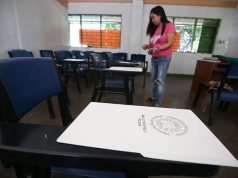On the anniversary of the May 2016 elections, analysts noted that it was generally perceived as a credible one, but, nevertheless, gave suggestions on how to improve the system, including providing greater voting access to indigenous peoples, making the electoral process clearer to voters, and encouraging the youth to participate.
Commission on Elections chairman Andres Bautista himself raised the possibility of holding early elections for IPs, persons with disabilities, and senior citizens.
Dr. Francisco Magno, president of the Philippine Political Science Association, pointed out that the high voter turnout – estimated at 81 percent – was a strong indicator of the credibility of the electoral exercise.
He also cited a July 2016 Pule Asia survey assessing the conduct of the elections, where 63% of the respondents considered the results to be more credible compared to the 2010 results, and 78% said the pace of the release of results was faster compared to the 2010 polls.
The speedy availability of vote tallies dramatically shortened the period of uncertainty after the polls closed, thus contributing to the perceived credibility and integrity of the elections, Magno explained.
“By transitioning from manual (elections) to automated, we treat our citizens better,” he said.
But in his paper “Technology, Democracy, and Elections in the Philippines”, co-authored with Danica Ella Panelo for the Albert Del Rosario Institute for Strategic and International Studies, Magno noted that there were still ways to further improve the system.
For example, Comelec could have alternative registration procedures for IPs and PWDs, going to their residences or extending online registration to PWDs. They could pass around voting instructions while voters were in line. They could also appoint a forth polling official in busier precincts.
Comelec, he said, must also work harder to get the youth to vote. Their participation had been waning not just in the Philippines, but in other countries, too. They were active in various forms of Internet-related activism, but, “at the end of the day, it’s really going to the polls that matters,” Magno said.
“Should the worlds of technology and politics be combined, there is a high possibility that young adults will be equally active,” he added.
Bautista noted that the youth aged 18 to 35 made up 40 to 45 percent of the voting population. Comelec estimated that they comprised an estimated 22 million voters. To emphasize the number, the Comelec chairman recalled that then Senator Benigno Aquino III won with 15.7 million votes in 2010, while then Davao City Mayor Rodrigo Duterte won with 16.6 million votes last year.
Theoretically, the youth vote could put a president, vice-president, and senators in power, Bautista said. “It’s a very powerful component of society, and that’s why we really need to engage them and get them to participate.”
He acknowledged that Comelec had to “adjust” its ways of communicating, given that social media was where the youth was.
Bautista was proud to say, however, that Comelec had grown more attuned to the needs of marginalized voters. For example, during the last registration, the poll body reached out to the Mangyan tribes people of Mindoro instead of waiting for them to come to town register in their offices. During the last elections, as well, Comelec established three precincts on Mangyan home ground in the mountains, yielding an 89% turnout as a result.
Bautista noted that a bill that would introduce early voting for PWDs and senior citizens was pending in Congress. This would help decongest polling places on election day, although Comelec would face challenges in terms of logistics and costs. Additional training would have to be provided, too.
He went to South Korea to observe the elections there this month, and saw that people could vote as early as six days before Election Day – at any open polling center. All they had to do was present their ID, and this would be scanned for verification purposes. Then a ballot is printed. After voting, the ballot is placed in a ballot box if the voter was from that precinct. If not, the ballot is placed in an envelope and mailed to their respective precinct.
It would be difficult to do the same in the Philippines, however, as the postal system could not guarantee swift delivery, Bautista said.
“But, having said that, the concept of early voting makes sense,” he elaborated. Comelec was now considering how it could be implemented.
Meanwhile, political analyst Richard Heydarian recommended that Comelec and automation technology provider Smartmatic reach out to the public and better explain the “nitty-gritty” of the automated election system, especially in a “low-trust society” and an “age of fake news”.
“A simple mistake” such as the alteration of the hash code of the transparency server by Smartmatic Philippines project director Marlon Garcia, could be “blown way out of proportion” and spawn a multiplier effect on public opinion, said Heydarian.
“Some nobody bloggers and people with shady propagandist agenda who happen to have good following” were responsible, he added.
“(T)he last thing we need are opinion-makers who themselves do not know what is happening,” he said.
He called on the two institutions to demystify the technical details for ordinary people.
“There was so many contradictory information. There was a … fog of ignorance,” Heydarian said.










